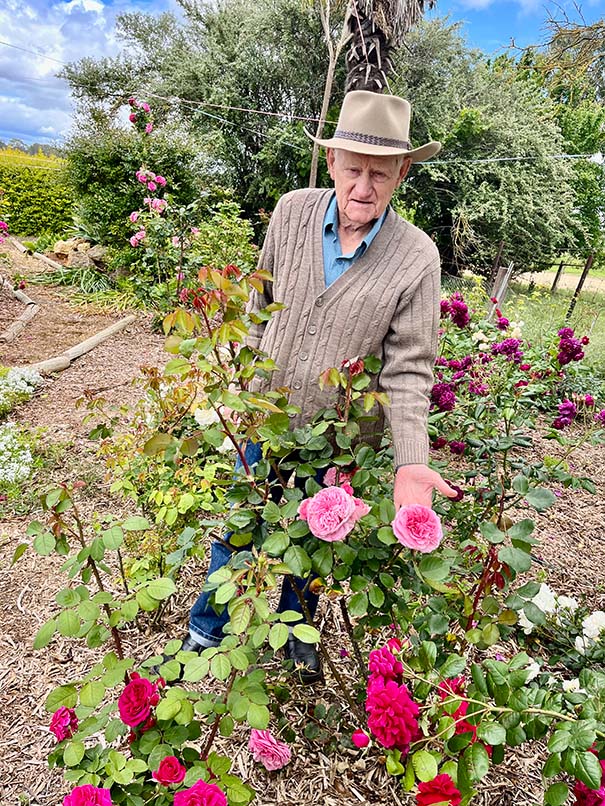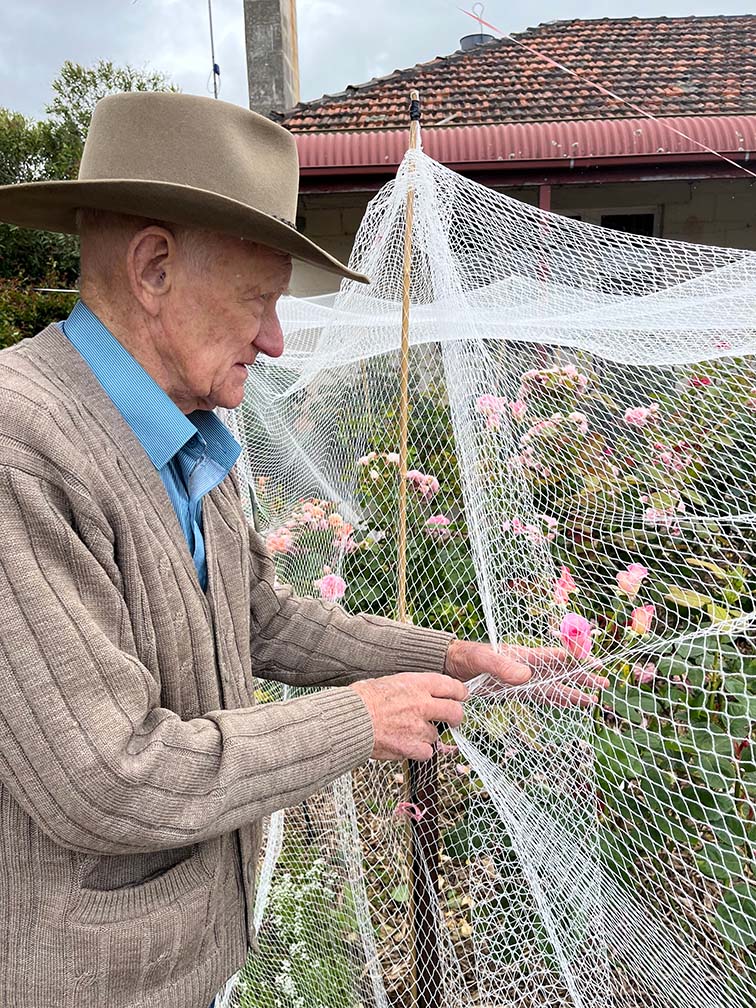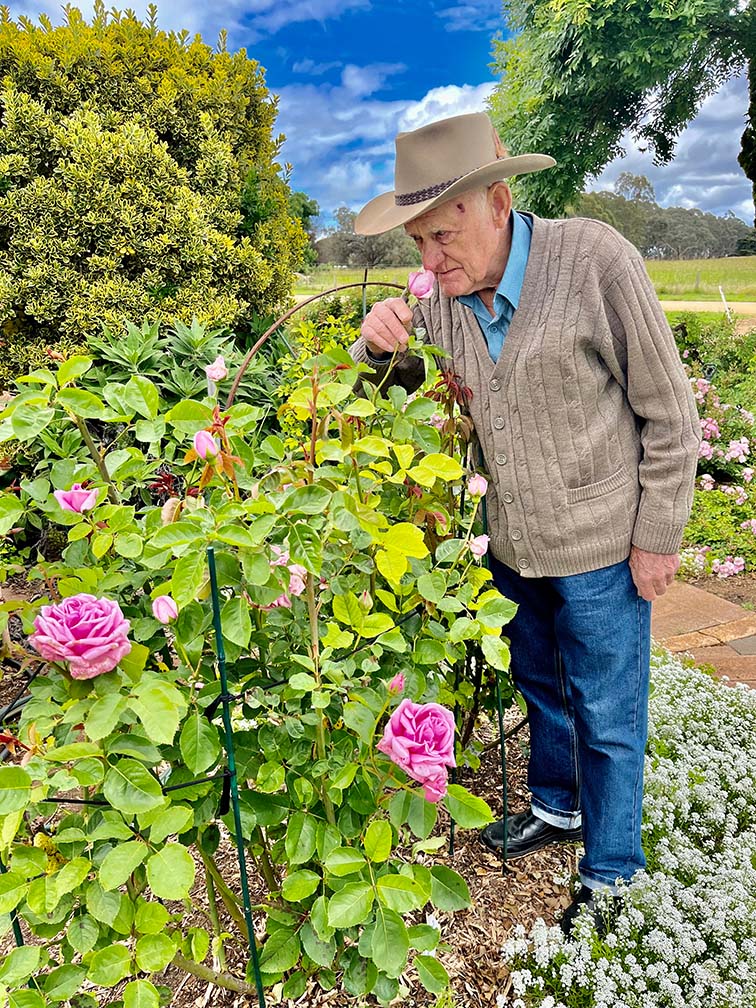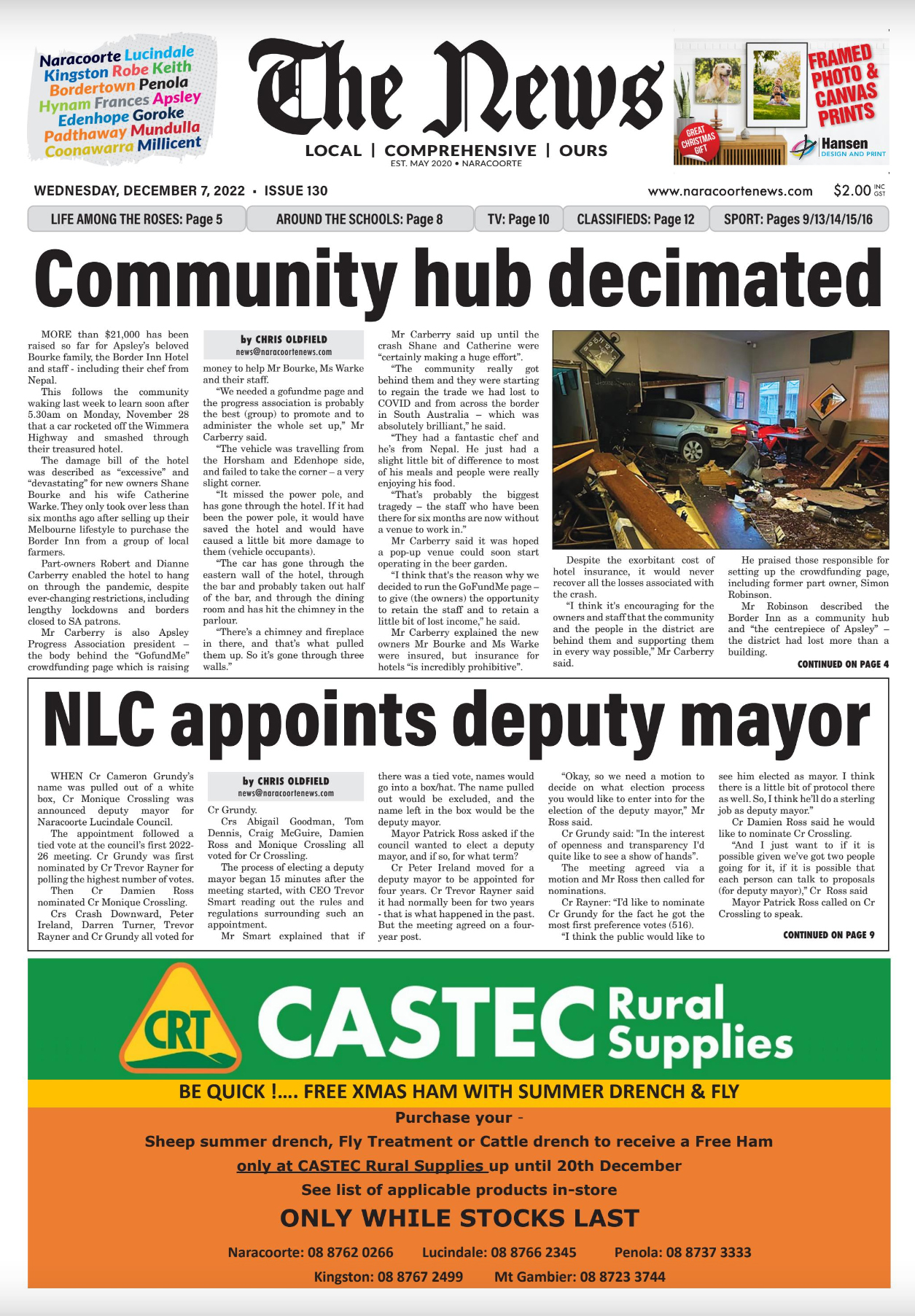Chris Oldfield, Naracoorte Community News
The sweet smell of roses hangs in the air wherever you walk in the garden of internationally acclaimed hybridist George Thomson and his wife Linda.
On the outskirts of Naracoorte, they live among hundreds of colourful roses – varieties which have taken decades to breed and grow.
“Up until about five years ago I was planting 500,000 seeds a year,” Mr Thomson said.
“From that number, you would probably get only two that you could sell on the market – two that were commercially viable.
“It actually takes about 10 years to breed a rose (variety).
“It’s a numbers game, the bigger the number of seeds you put in, the bigger the chance you get of putting something on the market in 10 years’ time.”
When Mr Thomson’s new rose varieties eventually go on the market, most royalties from his “hobby” go to charity.
Winning a raft of State and national prizes, medals and awards, Mr Thomson is best known for breeding roses which are disease resistant and suit the Australian climate.
“You’ve got to test them and you’ve got to cull. You can’t have leaves that get mildew as soon as the sun goes behind a cloud,” Mr Thomson said.
And unlike Aberdeen in Scotland where he grew up, his roses must endure the dry Australian climate.
“I test a lot of my roses on a block I’ve got up at Broken Hill in the desert. If they are going to survive there, they are going to survive anywhere,” he smiles.
In addition to garden beds bursting with blooms, a huge range of potted roses are lined up throughout the garden and yard.
Some belong to Mrs Thomson who enjoys breeding and growing her own colourful plants. Others are still blooming after returning from the recent World Rose Convention 2022 in Adelaide.
“At the convention I was a bit surprised at the amount of people from overseas who had heard of me and the roses I have bred,” Mr Thomson said.
Many of the roses he took to the convention, and some special ones in the main garden are covered by bird netting.
“That’s to stop the parrots – they chew them to pieces if I don’t keep them covered,” he said.
From international buyers, organisations and councils to global companies like Jurlique, Mr Thomson’s multi-award winning creations are highly sought after.
But instead of saving profits for himself, Mr Thomson has generously enabled many charities to use royalties to raise valuable funds for research or those less fortunate.
Royalties from his “Howard Florey” rose go to the Howard Florey Medical Institute for research. Mr Thomson named that rose in honour of the Australian scientist’s role in the advancement and widespread use of penicillin.
His “Wildfire” rose was created for a CFS and emergency services fund to help families of fire fighters and volunteers who lost their lives. The rose changes colours featuring yellow, orange and red in blooming clusters, and grows on a small bush, thriving in the hot sun.
Mr Thomson is also the hybridist behind the renowned “Mrs Mary Thomson” rose, a pink perfumed beauty which has raised tens of thousands of dollars for the Breast Cancer Foundation.
“That’s the first rose (variety) I bred that actually came out commercially very well, and I named that one after my mother. I think it’s a beautiful rose,” Mr Thomson said.
Another “beautiful rose” is named “Linda”, in honour of his beloved wife.
Mr Thomson recalls being about five years old or “a bit younger” when he first smelt his mother’s roses at their farmhouse near Aberdeen, Scotland.
“They were the old Gallica variety, and I loved the perfume. It was a beautiful smell,” he said.
His interest in roses and how things grew intensified and George remembers being “about 15” when he first dabbled in rose breeding, winning various prizes for his blooms at shows and exhibitions.
Mr Thomson worked on the farm, helping to manage around 250 head of Aberdeen Angus cattle during his teenage years and also gained tertiary qualifications in horticulture and a professorship in animal husbandry.
During his early adulthood, Mr Thomson was employed as a journeyman by Alec Cocker of Cocker Roses in Scotland, as well as the famous Kew Gardens.
The Thomson family moved to a dairy farm in Victoria during the mid 1950s while Mr Thomson was still in the British Army. He then followed the family in 1958 when he was 22 years old.
“We couldn’t believe how easy farming was in Australia compared with home,” Mr Thomson said.
As the years flicked by, he moved to the Adelaide Hills to manage a farming property and continue rose breeding as a hobby.
By 2002, he retired from farming and “really concentrated on breeding roses from then”.
There were many times he thought about doing something else, as a lot of people thought Australian roses were no good.
“But I decided to just keep doing it for myself,” he said.
Perseverance over the years eventually found Mr Thomson recognised as the biggest rose breeder in Australia, winner of the unique Australian Rose Award and named one of the top 10 rose breeders in the world.
Mr and Mrs Thomson moved from the Adelaide Hills and settled near Naracoorte in 2019 “to be closer to family – my brother is up the road a bit”.
On the second Saturday of each month Mr and Mrs Thomson can be found at the Naracoorte Community Market, behind The Sheep’s Back museum.
Footnote: To be continued next week – one of Mr Thomson’s most famous roses.
This article appeared in the Naracoorte Community News.




